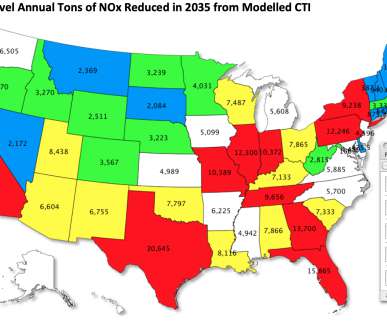MECA emissions inventory & air quality modeling shows potential benefits of national cleaner trucks initiative at CARB limits
Green Car Congress
JUNE 26, 2020
Later years should show additional improvements as greater fleet turnover occurs. The modeled 2028 base year 8-hour ozone design values were found to be above the 70 ppb NAAQS for 75 monitoring locations. Metropolitan areas and highway corridors will see the greatest reduction in ozone due to the strategy, with reductions of up to 6.5



























Let's personalize your content